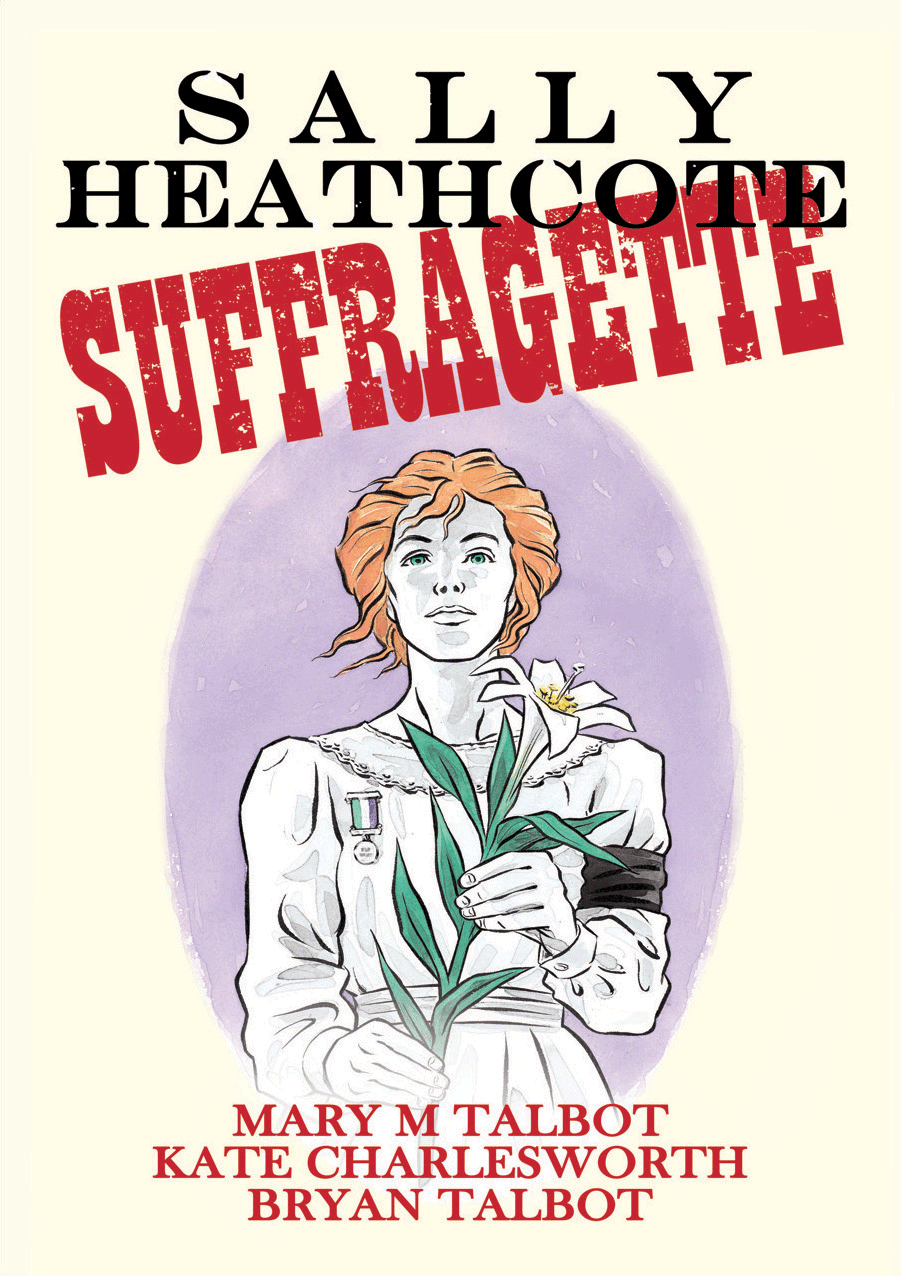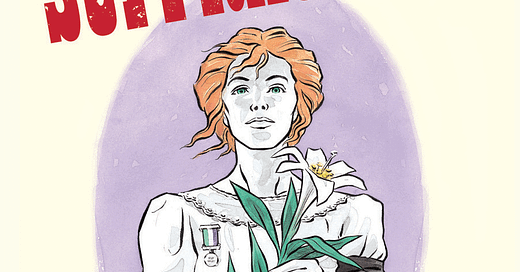Sally Heathcote Suffragette
Bryan and Mary Talbot were at last year's Ilkley literature festival talking about this graphic novel, and since then it's been part of the Read Regional promotion in northern libraries. Particularly with the forthcoming suffragette film focusing people's attention on the subject at the moment, Sally Heathcote Suffragette deserves a wide audience.

As you'd expect given who produced it (Mary Talbot, Bryan Talbot, and Kate Charlesworth) it's a high quality affair, with beautifully detailed artwork. I'm almost sorry that I borrowed it from the library, as there are some pages in particular I'd love to keep. The colours are generally muted, except for the purple and green of the WSPU, and the flaming ginger of Sally's hair, that allows her to be spotted easily in a crowd. The background is full of authentic reproductions of railway posters, advertising boards and the like, and the era is conjured magnificently.
I found myself thinking early on 'That Mrs Pankhurst is a right piece of work' and I can't say my opinion changed. The character of Sally is a good one to see the development of the story through, but I didn't have much sympathy for Sally myself, as she gets involved in violence and destruction, and goes along with the absolute outrage at the idea of working men possibly getting the vote (that's the trouble with groups that want the advancement of one section of society, rather than improvements for all). If you have a Northern and/or working class chip prepare to get it exercised, with Londoners patronising Sally for being from Lancashire and middle class women patronising her for being poor. Also, whether this was the intention or not, as it starts and ends with Sally as an old lady it did make me stop and think about the invisibility of the old, who knows what extraordinary things they did before they were so frail.
There are notes and a timeline at the back to really propel you into the history but I learnt a lot from the story itself (Sylvia Pankhurst's split from her mother and Christabel for instance). Coincidentally, I read it in the week of the centenary of Keir Hardie's death (thus getting a reminder of his involvement with trying to expand the franchise), and immediately before I started on Selina Todd's The People: The Rise and Fall of the Working Class 1910-2010 (which covers both female and working male suffrage in the first chapter) so it all slotted into place nicely.



